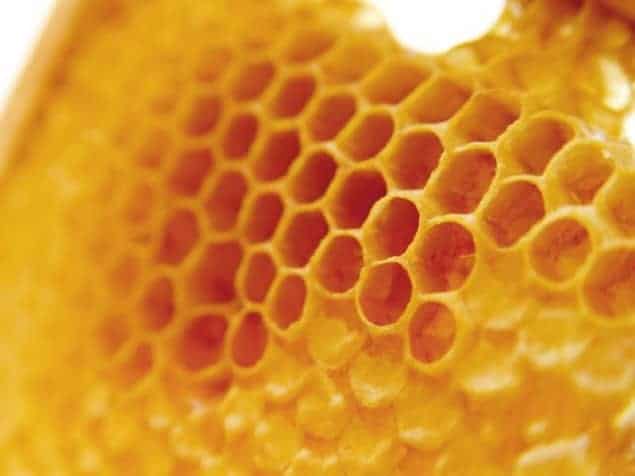
A materials science breakthrough in the US and Taiwan could lead to a new type of window that can harness the power of the Sun. The newly created transparent material can efficiently capture photons to generate electricity thanks to its honeycomb structure, which blends the properties of a semiconductor polymer with those of a carbon-rich fullerene.
The chosen polymer, P1, is efficient at absorbing photons, which causes electrons and holes within the material to combine into bound states known as excitons. The role of the fullerene – which is a compound formed when a large number of carbon atoms form ball-shaped molecules – is to then undo this process by dissociating the electrons and holes. Suitably placed electrodes can then extract the charges to produce photocurrents.
Mircea Cotlet, one of the researchers based at Brookhaven National Laboratory near New York City, told physicsworld.com that the biggest challenge was finding a way to merge the polymer and fullerene into a honeycomb lattice. His team achieved this by creating a flow of micron-sized water droplets across a thin layer of the polymer/fullerene solution. Water droplets then self-assemble into large arrays within the solution. Once the newly formed solution has evaporated it leaves behind a hexagonal honeycomb pattern over a large area of the polymer, which the researchers observed using scanning probe and electron microscopy.
“Though such honeycomb-patterned thin films have previously been made using conventional polymers like polystyrene, this is the first report of such a material that blends semiconductors and fullerenes to absorb light and efficiently generate charge and charge separation,” says Cotlet.
A window of opportunity
Cotlet is keen to stress that the idea behind the study was to explore the basic science and to develop self-assembly methods that do not require intense laboratory infrastructure. He reveals, however, that his team now intends to develop the work by implementing the honeycomb into devices and carrying out a number of tests. Among the applications that could spring from the work are optical displays and devices, including transparent solar cells.
Another possibility is to incorporate the honeycomb films into windows. As the polymer chains gather mostly at the edges of hexagons, the films would remain mostly transparent with remaining chains spread thinly across the hexagon centres. “Imagine a house with windows made of this kind of material, which, combined with a solar roof, would cut its electricity costs significantly. This is pretty exciting,” says Cotlet.
It is not yet clear how much electricity these windows could generate but it will not be enough to keep a building self-sustained. “At the end, you have a window in any house, why not get some electricity out of it?” says Cotlet.
The research is described in a research paper in Chemistry of Materials.



